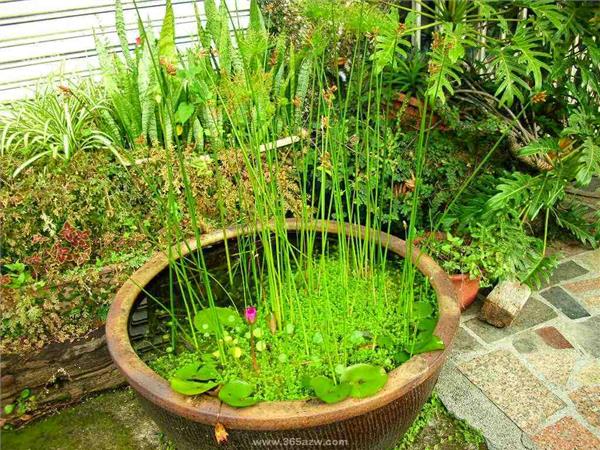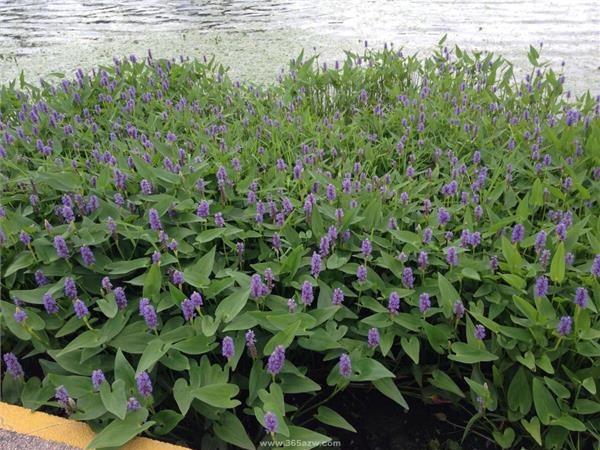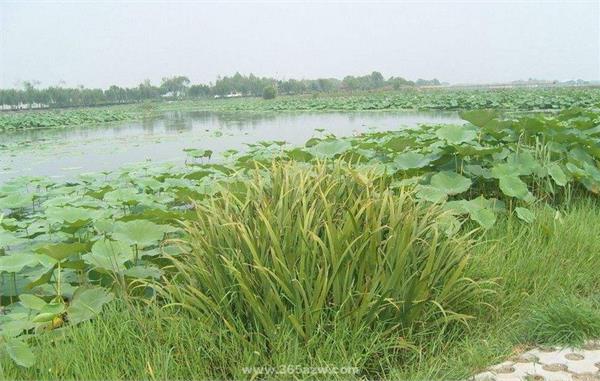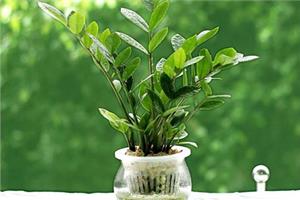What are the details of aquatic plants?
As the name implies, aquatic plants refer to plants that can grow in water. Let's take a look at the details of aquatic plants.

What are the details of aquatic plants?
1. Rich bamboo
Liliaceae is an evergreen upright shrub, which is very suitable for indoor hydroponic flowers. The leaves of Fugui bamboo are green, the stems are straight and round like bamboo. Leaves ovate, apex pointed, petiole base clasping. It is a very shade-tolerant plant. It still grows well and is tall and strong under weak light conditions. Can be placed indoors for a long time to watch the leaves, do not need special maintenance, as long as there is enough water, it can grow vigorously. In hydroponic culture, the stem of Fugui bamboo was cut into small segments of more than 20 cm as cuttings in water, and as long as the cuttings were soaked in water, they could take root and survive.
2. Hanging orchid
Perennial evergreen persistent-rooted herbaceous flowers of the family Liliaceae having clusters of leaves linear with longitudinal yellow-and-white stripes on the margin or in the middle. In summer and autumn, slender, flexible and drooping stolons are drawn from the leaves, tender leaves and aerial roots germinate at the top or nodes, and white flowers bloom. The orchid can be raised in indoor water, which can not only purify the air, but also has the advantages of beautiful appearance and simple management. Dig out the potted orchid, go to the root soil, cut off the old root and rotten root, leave the fibrous root, put it in a container bottle, fill the bottle with water and flower nutrient solution, and let the root of the orchid grow in water.

3. Green pineapple
Araceae is a plant of the genus Colocasia, which belongs to climbing vines and foliage flowers. Sexual preference for warm, humid environment, rattan up to several meters long, internodes have air root, leaves will grow bigger and bigger, leaves alternate, evergreen. The stem of the radish is soft and the leaves are delicate. Aquaculture is very simple, make sure to change the water every 2 to 3 days, with simple nutrients. Green pineapple has a high ornamental value, vine stem naturally drooping, not only can purify the air, but also make full use of the space, for the rigid cabinet to add lively lines, lively color.
4. Ivy
Acanthopanax ivy is the most ideal indoor and outdoor vertical greening species, evergreen vines, thin and soft branches, aerial roots, climbing on other objects. The leaves are alternate, the leaves are triangular-ovate, and the demand for potted plants is increasing day by day. It is a typical negative plant, which can grow in full light, grow well in warm and humid climate, and is not resistant to cold. Water is easy to raise and has strong vitality.
5. Asparagus
Perennial evergreen herbaceous flowers of the genus Liliaceae. The stem is thin and weak, the branch is slender and leafy, and the level is developed. The flowers are small and white. Berries globose, black. After the fruit is ripe, it shows a little red in the thick green cluster, elegant and lovely. Plant strong negative tolerance, placed at the head of the bed, table case, elegant and generous, is a good indoor flower. Asparagus is also an ideal foil material for cut flowers. In recent years, water-raised asparagus has been successfully developed, which is even more elegant in the room.

6. Hyacinth
Hyacinth, also known as Narcissus, belongs to the hyacinth genus of Liliaceae, perennial herbs, bulb spherical or oblate, outer coat flag purplish blue or white, basic leaves, leaves thick, banded lanceolate. Flower stem extracted from the middle of the leaf stem, raceme, flower appearance delicate, colorful, dazzling, pleasant fragrance. Sex likes a sunny and cool and humid environment, which is not only suitable for potted plants, but also suitable for water culture. When raising water, put its bulb in the hydroponic nutrient solution, the appearance is clean, the ornamental is strong!
Survival characteristics of aquatic plants
The water environment is very different from the land environment. The water environment has the characteristics of fluidity, gentle temperature change, weak light intensity, low oxygen content and so on. In the process of long-term evolution, aquatic plants have formed many morphological structures adapted to the water environment, so they can reproduce themselves and occupy a certain position in the whole plant group.
The light intensity of the water environment is weak, so the leaves of aquatic plants are usually thin, some of them are silky or linear, some are banded, and some are broad and transparent. Chloroplasts are distributed not only in mesophyll cells, but also in epidermis, and chloroplasts can flow to the light-facing surface with the flow of protoplast, so that the weak light in water can be effectively used for photosynthesis.
The oxygen content in the water environment is less than that in the air, which is suitable for anoxic environment. Aquatic plants all have a well-developed ventilation system. The stomata of lotus root leaves can absorb oxygen from the air, and oxygen enters the leaves, and its oxygen concentration is higher than that of various organs of lotus root, and oxygen spreads to the ground through the ventilatory tissue of petiole, so as to ensure the normal respiration and metabolism of underground organs. This ventilation system belongs to the open type. The ventilation system of goldfish algae is closed, and the plant can store the carbon dioxide released during respiration for the needs of photosynthesis, and at the same time store the oxygen released by photosynthesis to meet the needs of respiration.
To meet the needs of breathing.
Related
- Wuhan Hospital Iron Tree Blooming Result Was Instantly Frightened by the Gardener Master
- Which variety of camellia is the most fragrant and best? Which one do you like best?
- What is the small blue coat, the breeding methods and matters needing attention of the succulent plant
- Dormancy time and maintenance management of succulent plants during dormancy
- Minas succulent how to raise, Minas succulent plant pictures
- What are the varieties of winter succulent plants
- How to raise succulent plants in twelve rolls? let's take a look at some experience of breeding twelve rolls.
- Attention should be paid to water control for succulent plants during dormant period (winter and summer)
- Watering experience of twelve rolls of succulent plants
- Techniques for fertilizing succulent plants. An article will let you know how to fertilize succulent plants.



